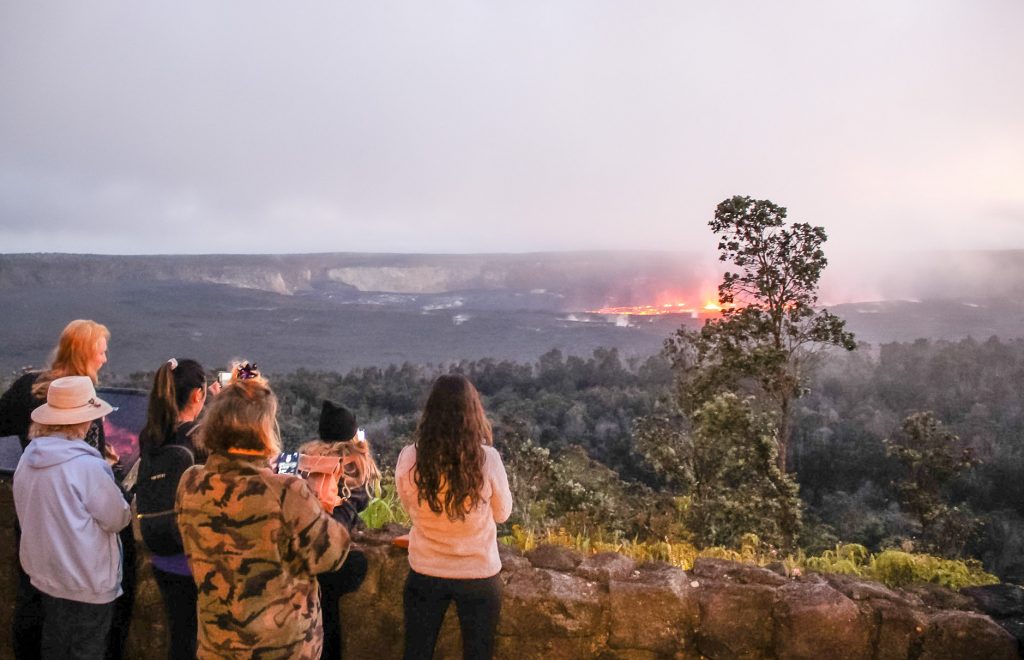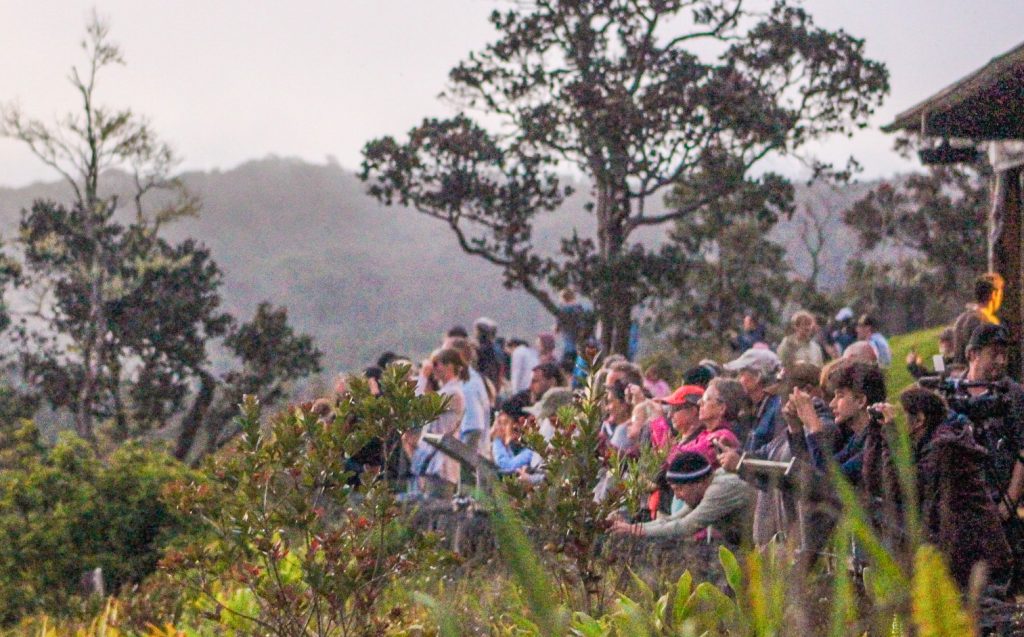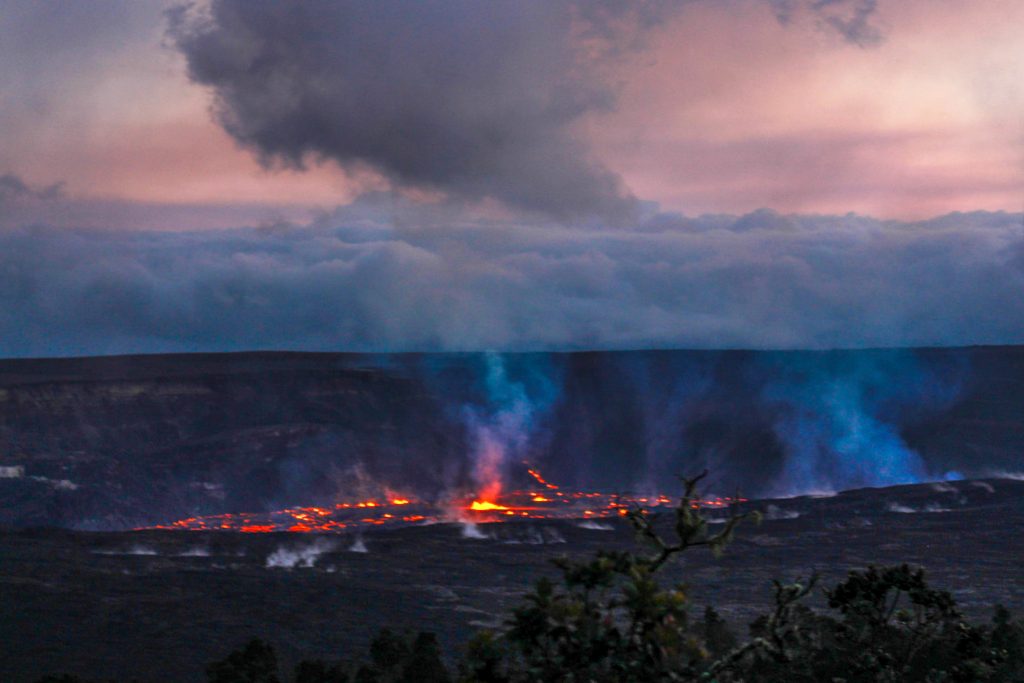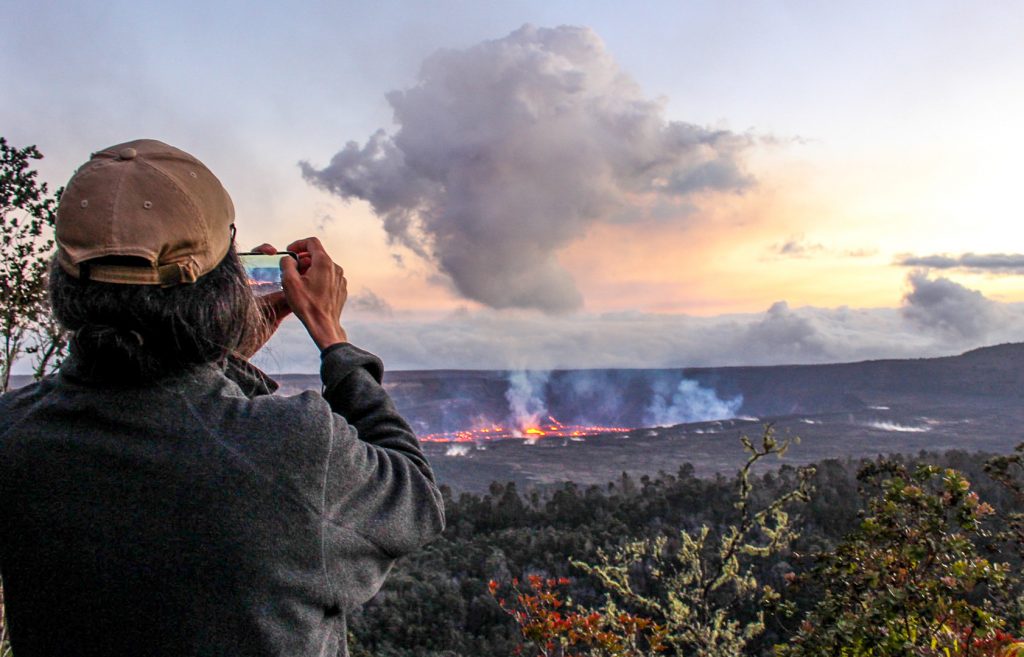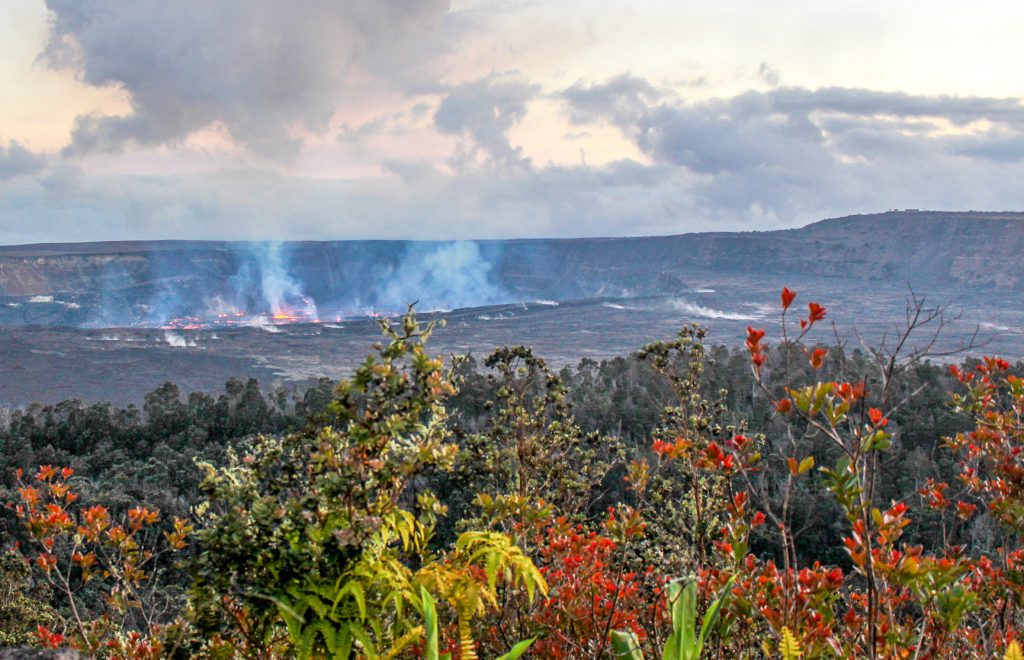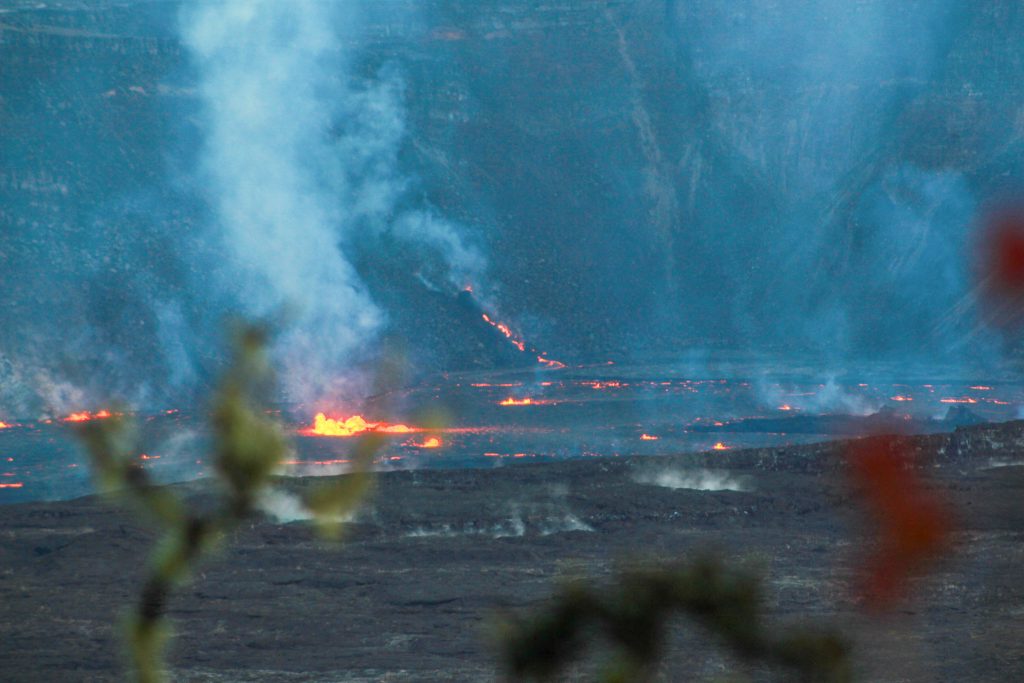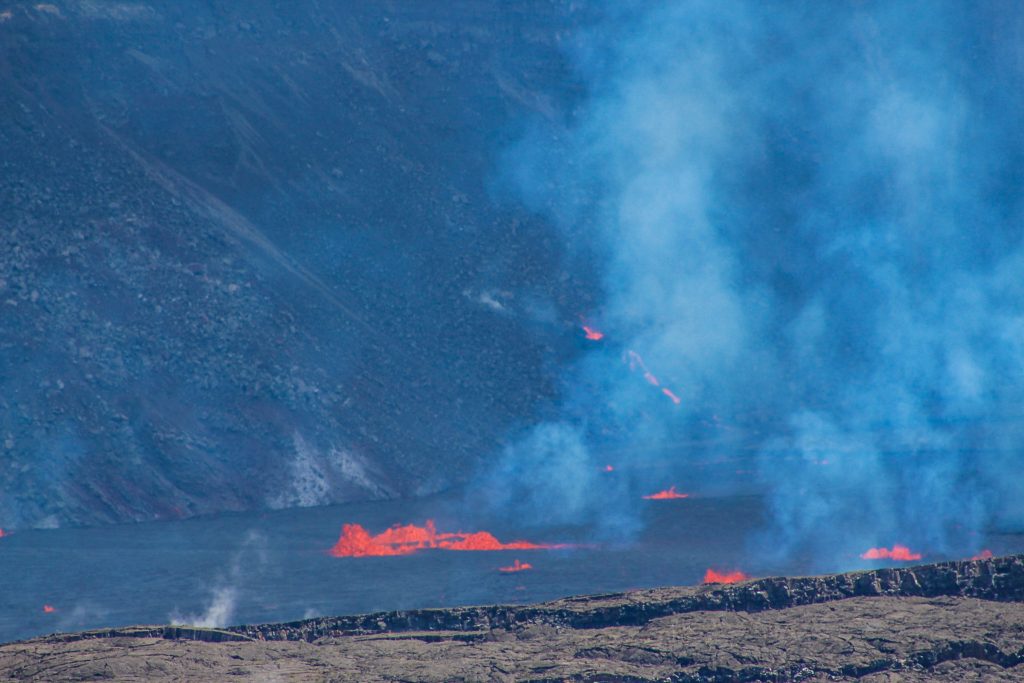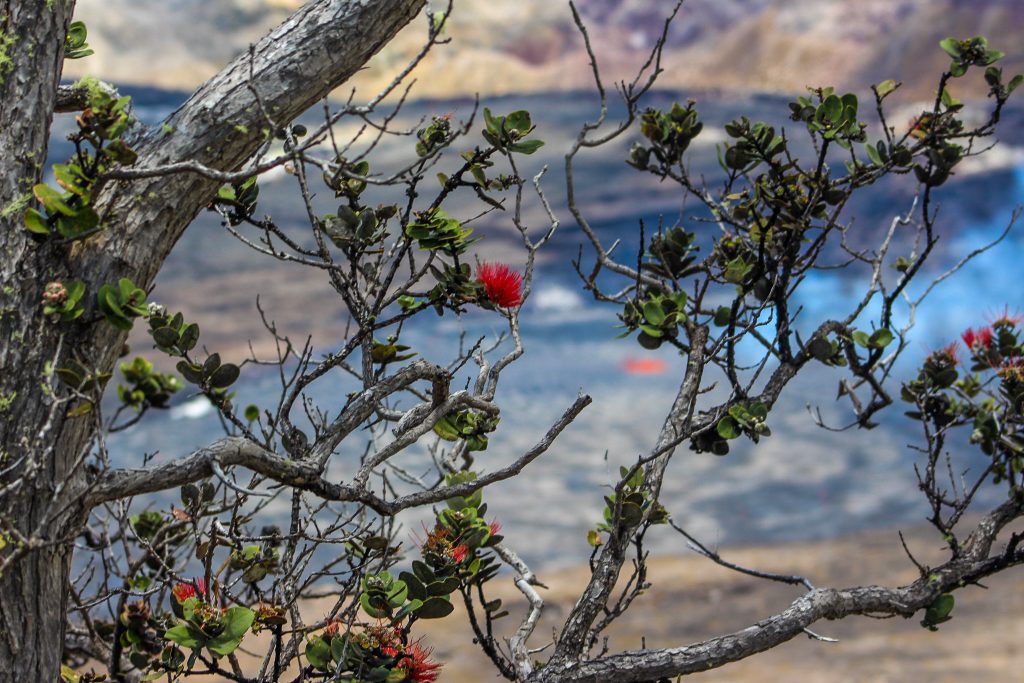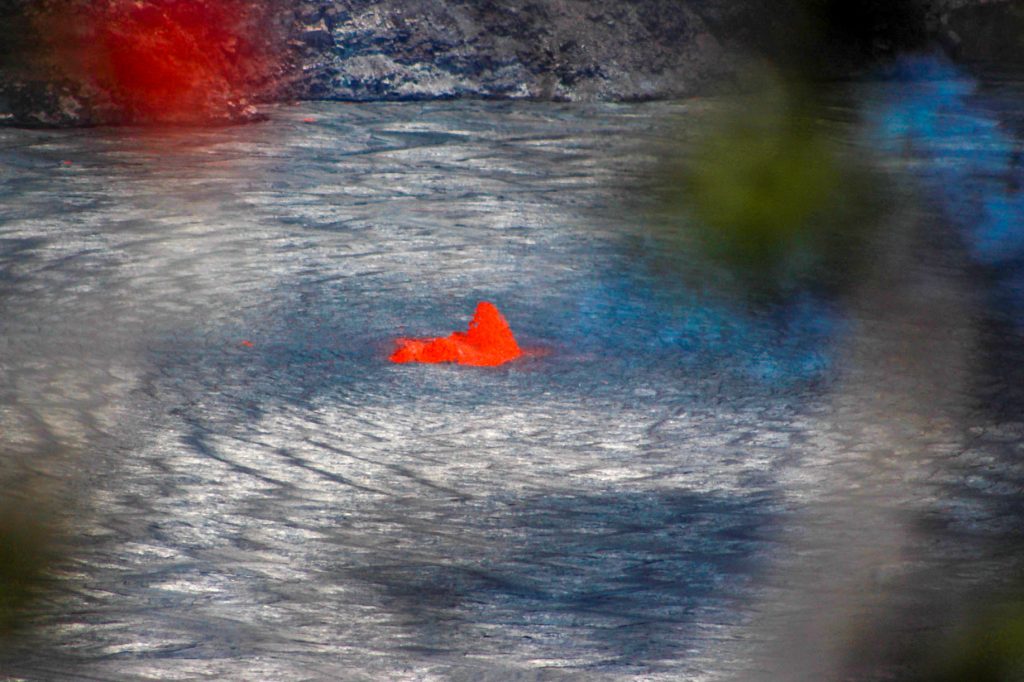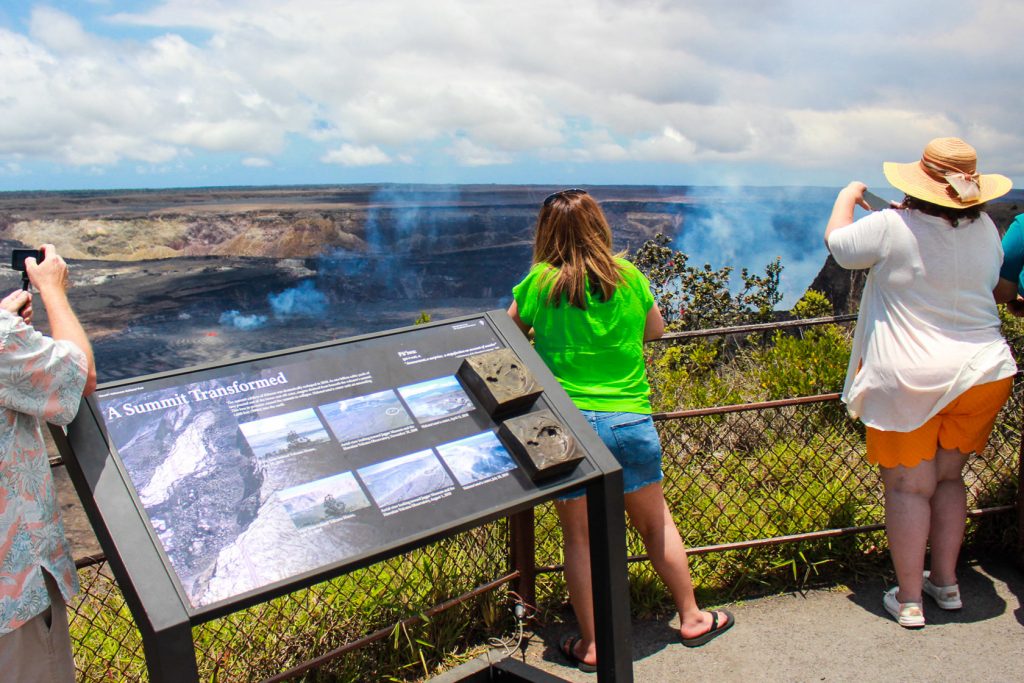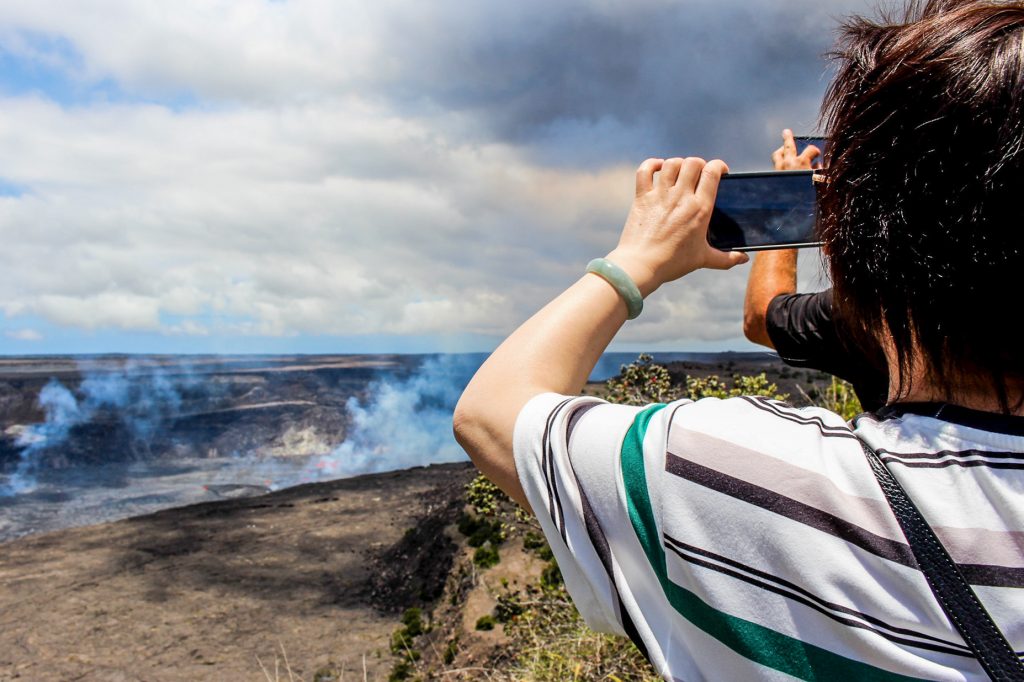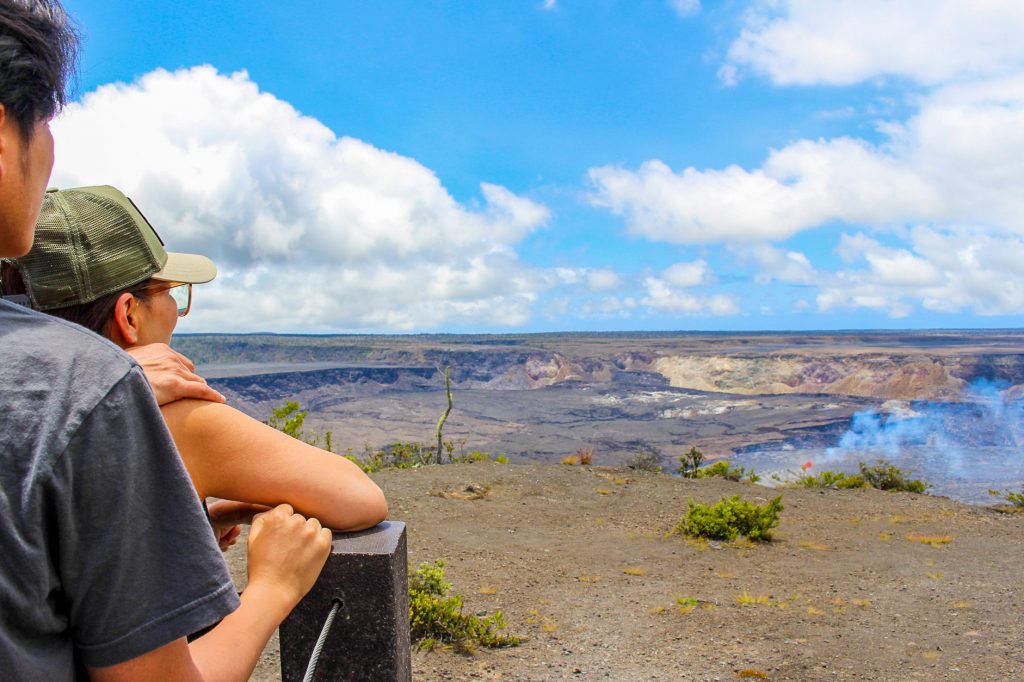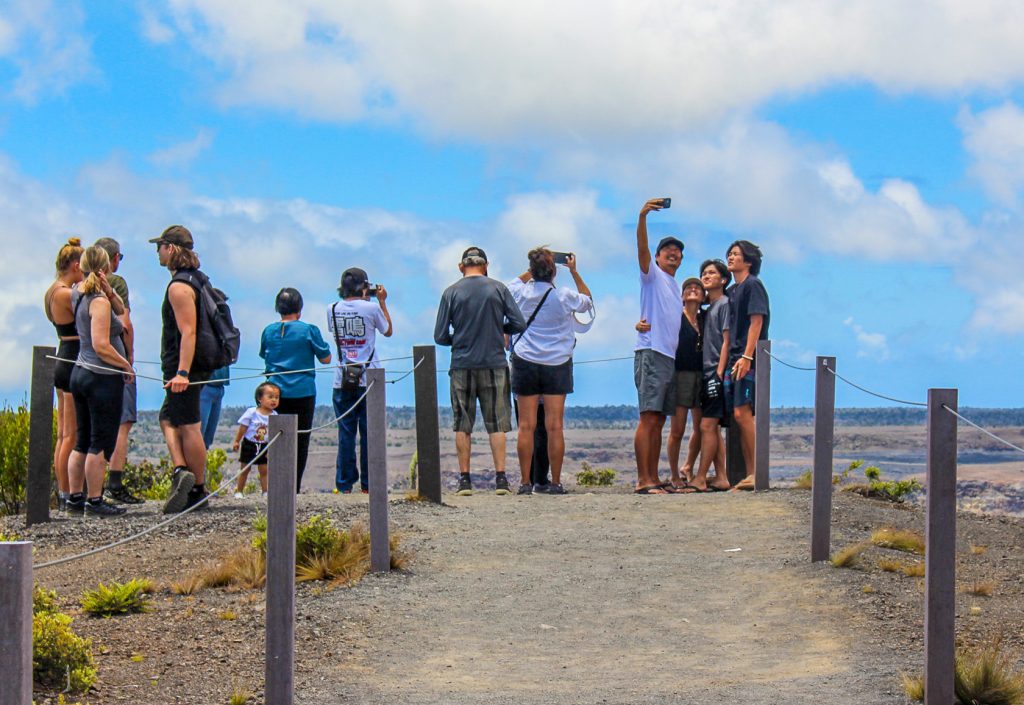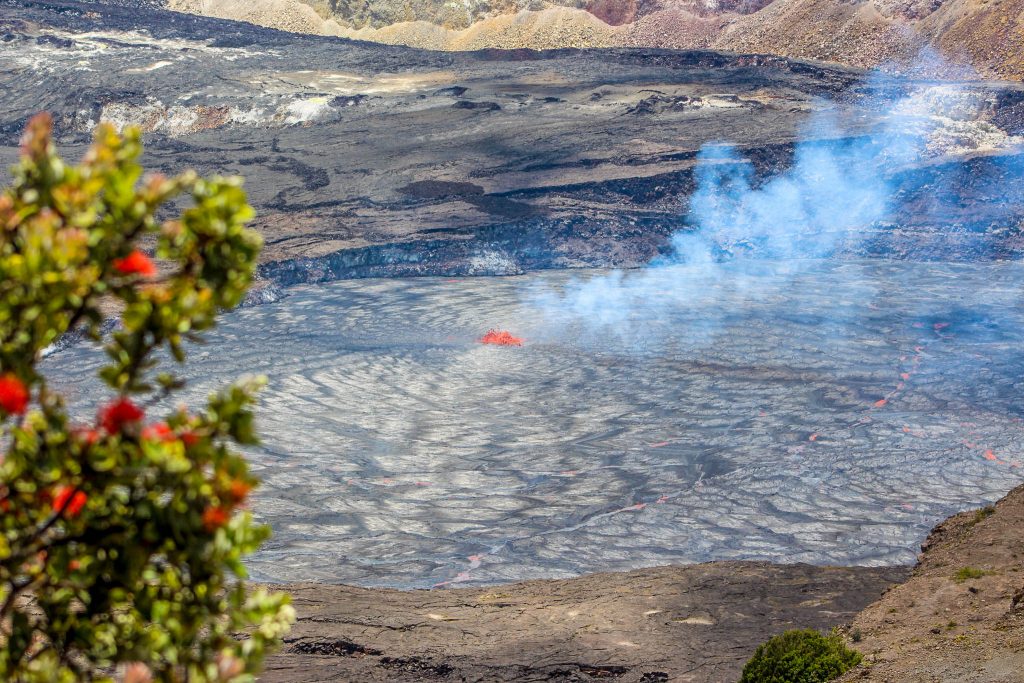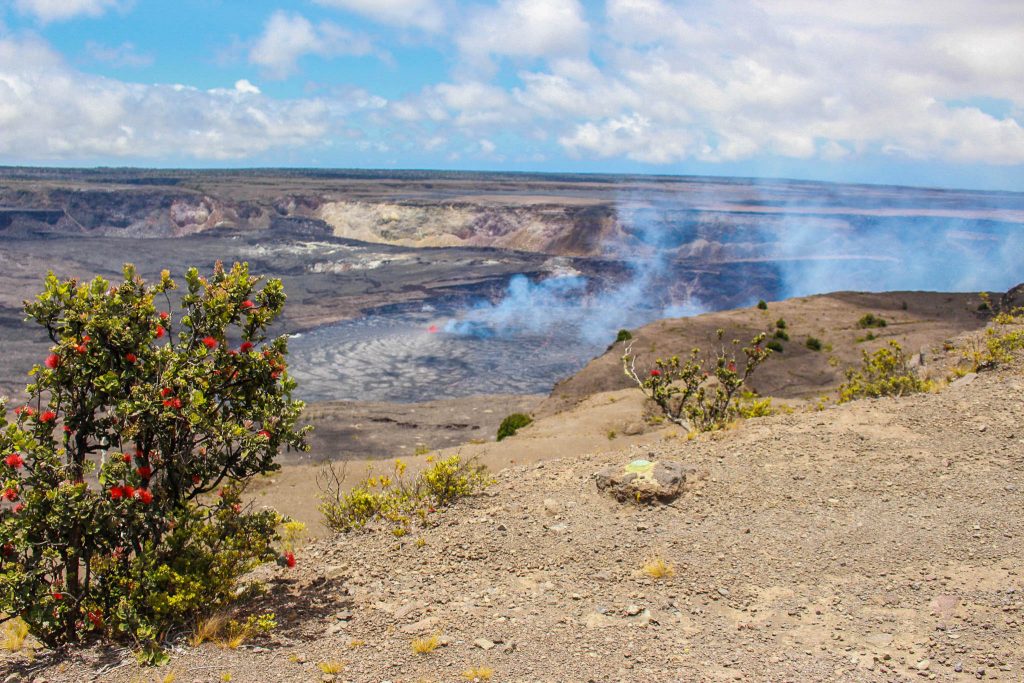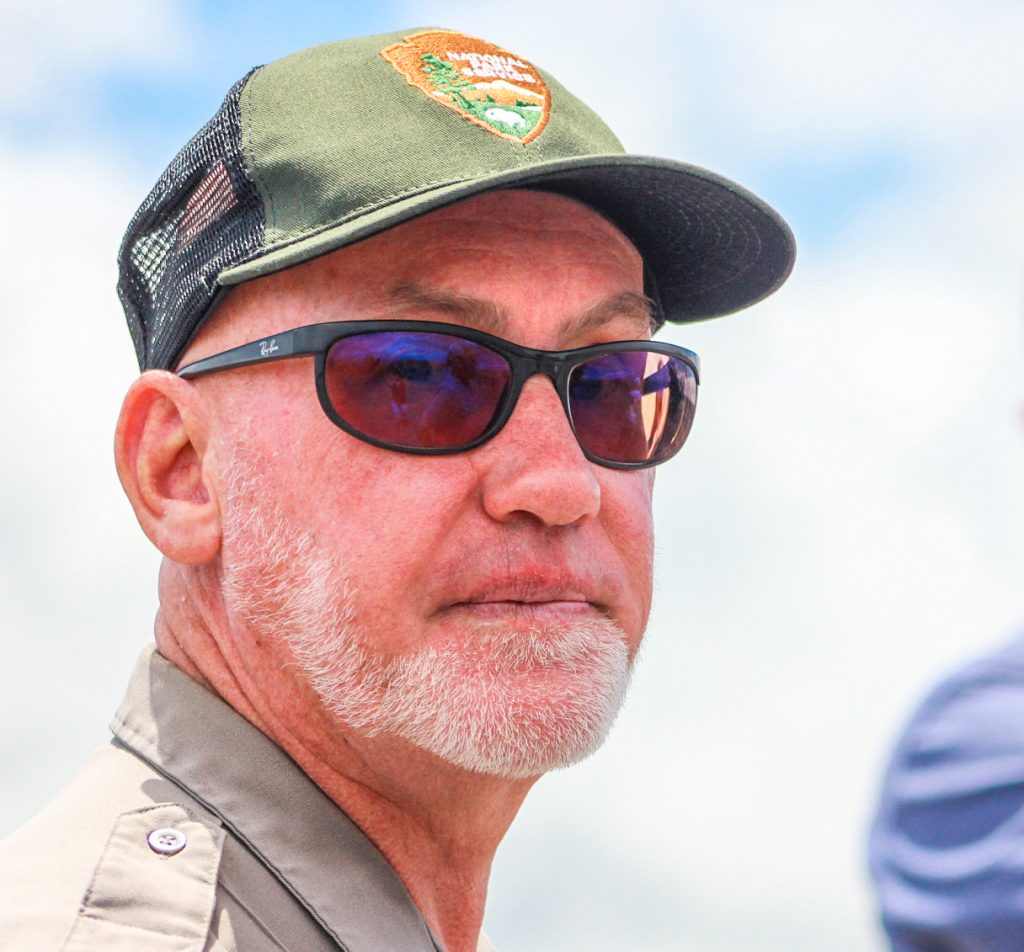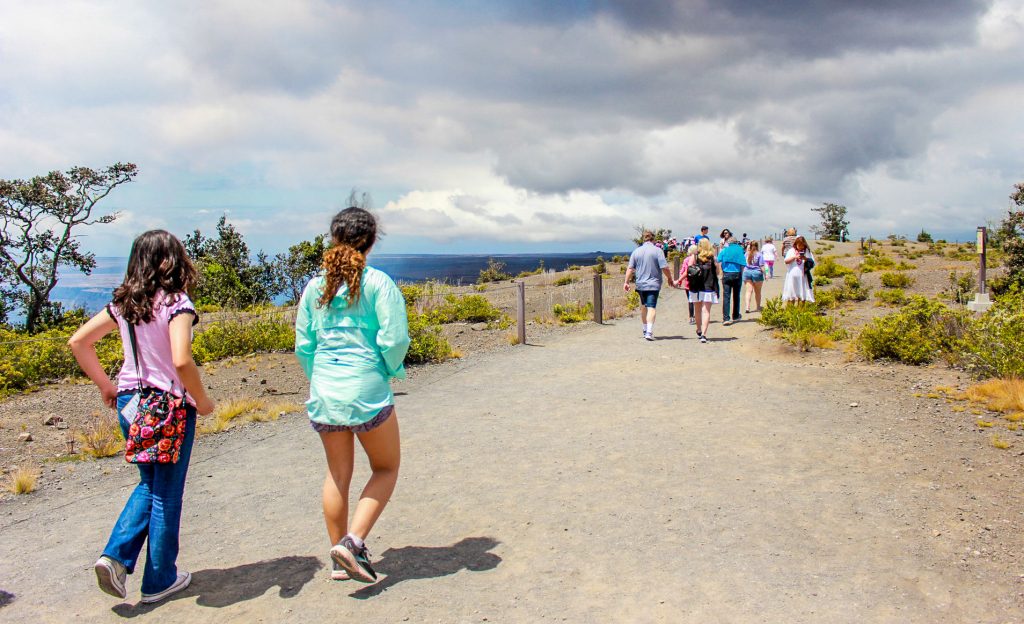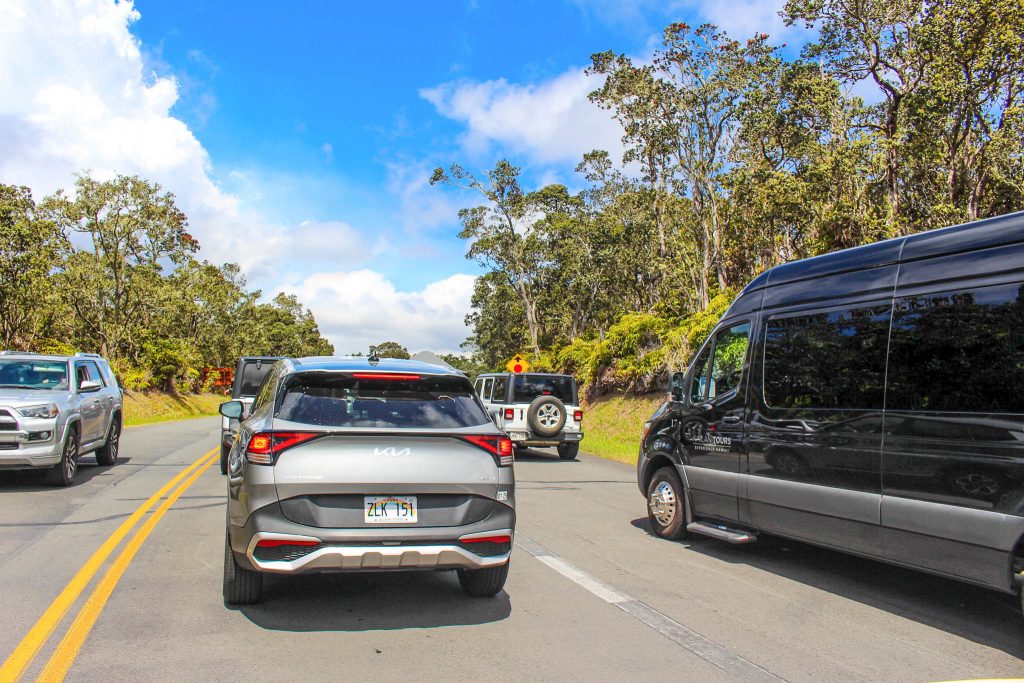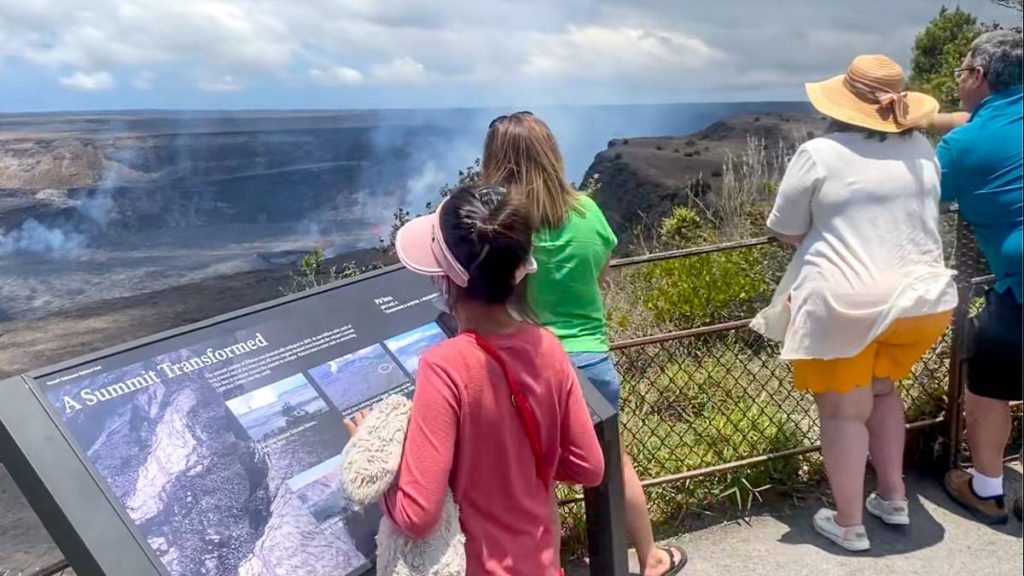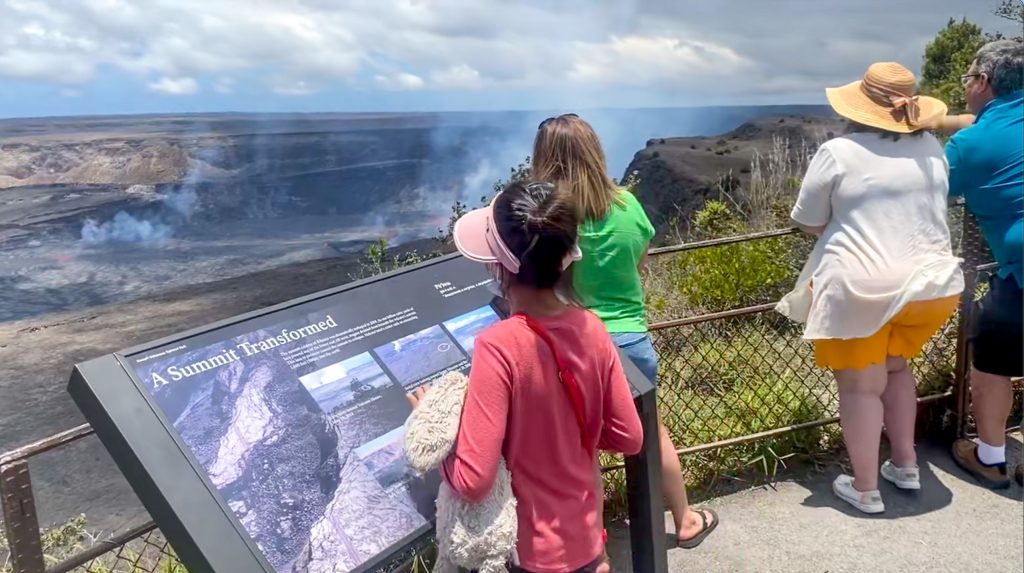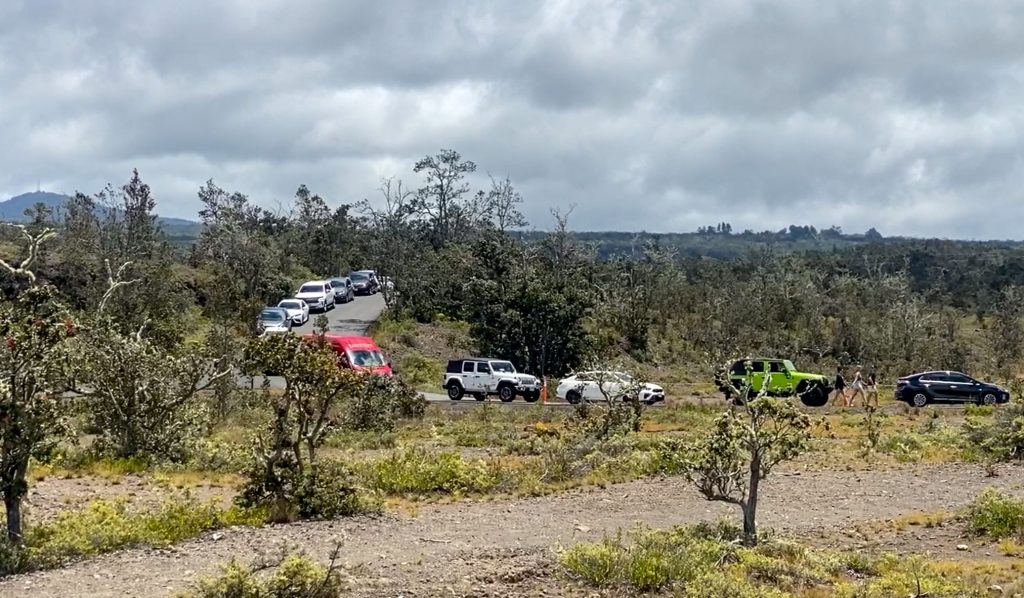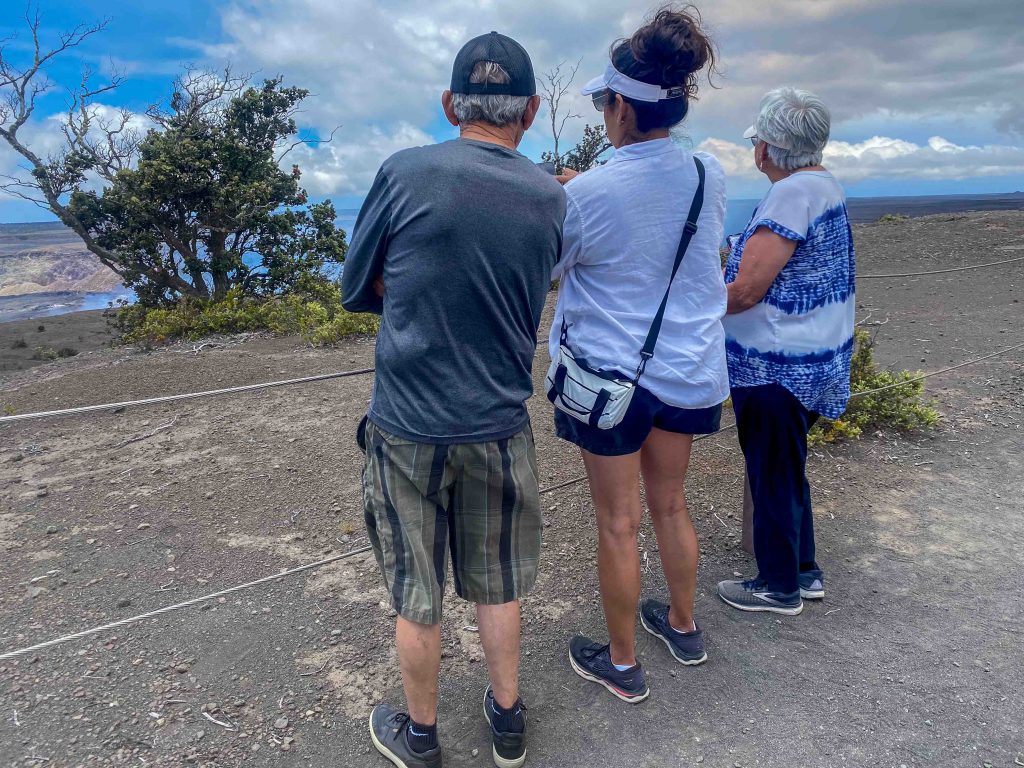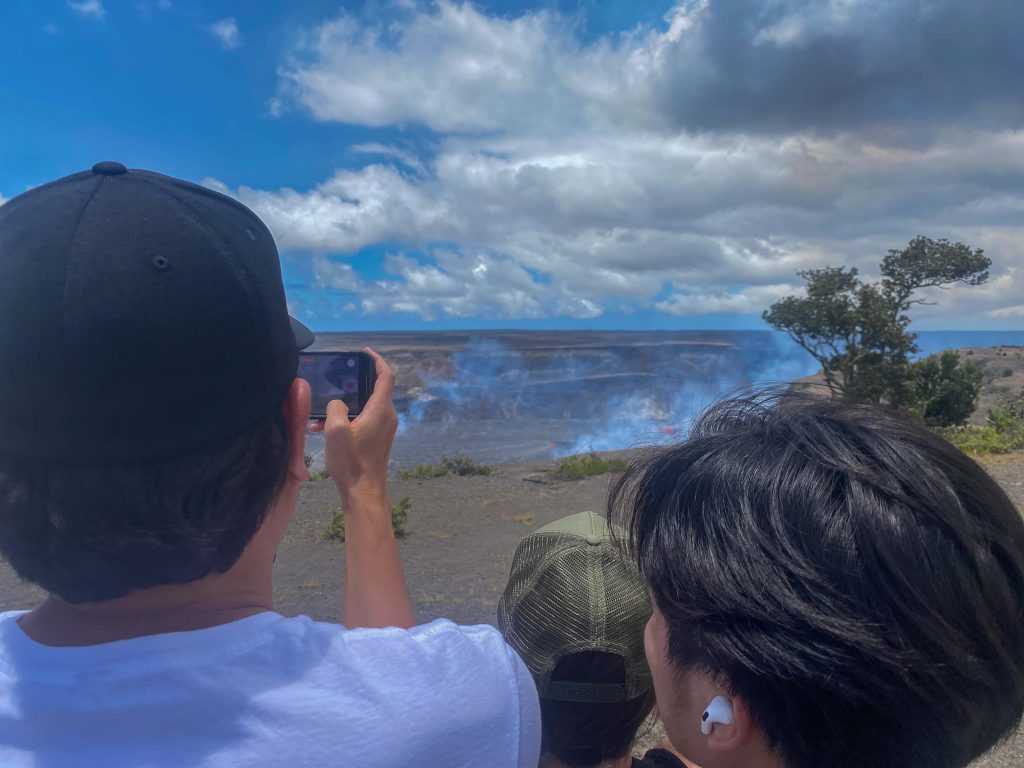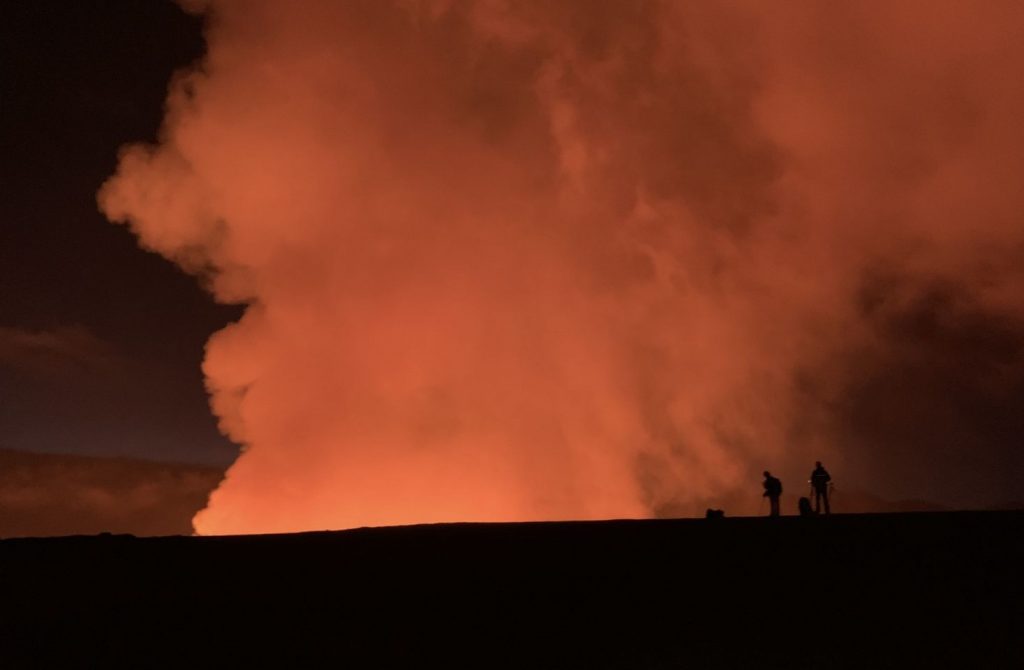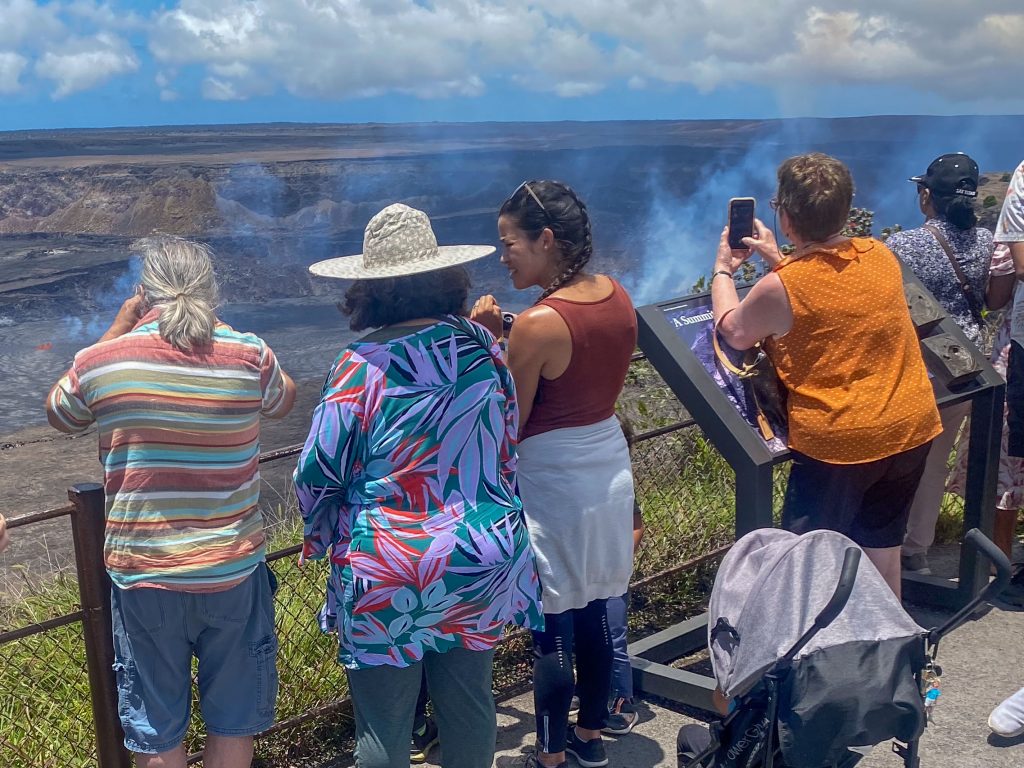Video and slideshow: Kīlaueaʻs spectacular lava show from June 7 eruption on Hawaiʻi Island
On Wednesday, news broke around the world that Kīlauea was erupting again. For those of us on the Big Island, it happened at 4:44 a.m.
Some Hawaiʻi island residents heard about the eruption during a radio public announcement from the voice of Hawaiʻi County Civil Defense Agency’s Darryl Oliveira.
The good news soon came from scientists at Hawaiian Volcano Observatory. They said this eruption occurred in the Halemaʻumaʻu Crater, and was expected to stay there and not threaten people and property on the slopes of the 4,000-foot volcano.
Many people are still recovering from the devastating 2018 eruption of Kīlauea, which destroyed more than 700 structures and 30 miles of roadway, and displaced more than 2,000 people on its march to the ocean.
On Wednesday, people immediately began to flock to Hawai’i Volcanoes National Park to see the full glory of the lava show.
At 10 a.m., there already was a line of cars waiting to get into the park, and slowly, one by one, each car entered in hopes of finding a parking spot to capture a glimpse of Pele in action. The parking lot of the Visitor’s Center was nearly full, with cars lining the roads in either direction and hikers walking fast around the crater rim.
At Uēkahuna, located above the steep clips of Kaluapele — the caldera of Kīlauea, visitors took selfies and soaked in one the world’s most natural wonders.
Park ranger Andy Orbnerg informed visitors there were better views (and parking) along the crater rim. At other lookouts around the park — which is bigger than the island of Oʻahu — people were packed in side-by-side like sardines as they tried to look into the crater and get photos and video.
Throughout Wednesday, the Volcano House and park were continuously busy with guests and tourists coming and going all day long. Hour-long waits to get a table at the restaurant and full parking lots became the norm into the evening.
Once night hit and the sun set, and the reddish-orange glow from Halemaʻumaʻu could be seen better against the dark sky, more and more visitors started to trickle in to see the show. Excited conversations took place as children played in the glow of Pele and the lava flow entranced onlookers into the night.
Please see the Hawaiʻi Volcanoes National Park website for visitor information: https://www.nps.gov/havo/index.htm. Visitors to Hawaiʻi Volcanoes National Park should note that under southerly (non-trade) wind conditions, there is potential for a dusting of powdery to gritty ash composed of volcanic glass and rock fragments. These ashfalls represent a minor hazard, but visitors should be aware that such dustings at areas around the Kīlauea summit are possible.
Sponsored Content
Comments







